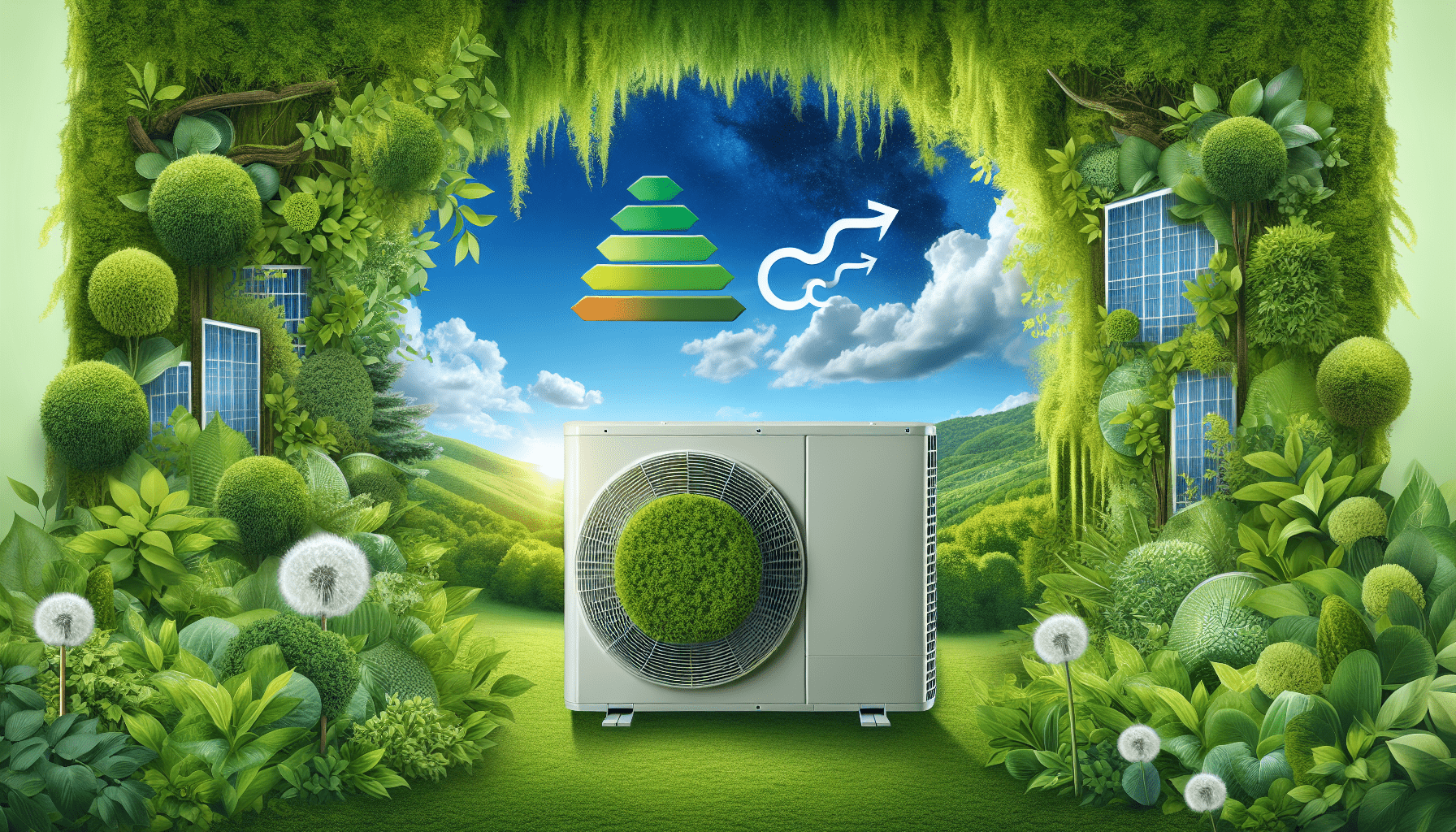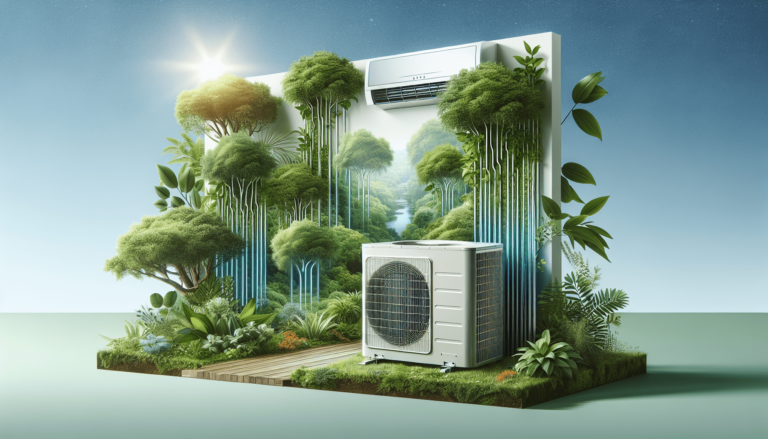

HVAC Services
Get Professional Repairs From The Area's Trusted HVAC Technicians. Ask About Our Services! We Offer Professional Heating & Cooling System Repairs And Guarantee Long-Lasting Results.
Got Question? Call us: (850) 678-2665Financing
Carbon Footprint Reduction With Green HVAC Systems
Discover how green HVAC systems can reduce your carbon footprint. Learn about eco-friendly options to keep your space comfy while saving the planet and cutting costs.

Have you ever stopped to think about the impact your heating, ventilation, and air conditioning (HVAC) system has on our planet? It turns out, the way we keep our homes and offices comfortable has a pretty significant carbon footprint. The good news is, there are green HVAC systems that can help you reduce your carbon emissions while still keeping your space cozy or cool. In this article, we’ll take a detailed look at how you can reduce your carbon footprint through eco-friendly HVAC solutions.

What Is a Carbon Footprint?
Before we jump into green HVAC systems, it’s essential to understand what a carbon footprint is. Your carbon footprint refers to the total amount of greenhouse gases, primarily carbon dioxide, that you release into the atmosphere as a result of your activities. This includes everything from driving your car to the energy used to power your home.
How HVAC Systems Impact Carbon Footprints
Traditional HVAC systems can be energy hogs, consuming large amounts of electricity, which often comes from burning fossil fuels. This process releases significant amounts of carbon dioxide into the atmosphere. Given that HVAC systems are almost always running, especially in extreme climates, the numbers add up quickly.
Why Reducing Your Carbon Footprint Matters
Reducing your carbon footprint isn’t just good for reducing your utility bills—it’s good for the planet, too. Lowering greenhouse gas emissions can help mitigate climate change, improve air quality, and contribute to a healthier planet for future generations.
What Is a Green HVAC System?
Green HVAC systems are designed to be more environmentally friendly compared to traditional systems. They use newer technologies and sustainable practices to provide heating and cooling more efficiently, thereby reducing energy consumption and, consequently, carbon emissions.
Components of a Green HVAC System
- Energy-Efficient Units: Modern units use less electricity than older models.
- Programmable Thermostats: These devices can adjust the temperature based on your routine, optimizing energy use.
- Zoning Systems: These systems allow you to control the temperature of individual rooms, so you’re not wasting energy heating or cooling unused spaces.
- Renewable Energy Sources: Some systems can be powered by renewable energy sources like solar or geothermal energy.
How Green HVAC Systems Work
At the core of a green HVAC system is the aim to maximize efficiency and minimize waste. This means using advanced technologies to ensure that no energy is lost. For example, better insulation and high-efficiency motors ensure that the energy used is the energy you feel.
Benefits of Green HVAC Systems
Switching to a green HVAC system offers a multitude of benefits. It’s not just about being kind to the environment—though that’s a significant part of it. It’s also about saving money and improving your quality of life.
Environmental Benefits
- Reduced Greenhouse Gas Emissions: Lower energy consumption directly translates to fewer emissions.
- Less Energy Waste: Systems are designed to operate at peak efficiency, so you use less power.
Economic Benefits
- Lower Energy Bills: While the upfront cost may be higher, the savings on your energy bill will make up for it.
- Increased Property Value: Homes with energy-efficient systems often have higher market values.
Health and Comfort Benefits
- Better Air Quality: Green HVAC systems often have superior air filtration systems.
- Consistent Temperature: Improved efficiency means more stable indoor temperatures.
Technologies That Make HVAC Systems Green
It’s not like a traditional HVAC system goes green by merely saying so. There are several cutting-edge technologies involved that make these systems eco-friendlier.
Geothermal Heat Pumps
Geothermal heat pumps use the constant temperature of the earth to heat and cool your home. Instead of using electricity to create heat, these systems transfer it, making them extremely efficient.
Solar-Powered HVAC Systems
These systems harness the power of the sun to provide the energy needed for heating and cooling. Solar panels installed on your property can generate the electricity needed, greatly reducing reliance on fossil fuels.
Smart Thermostats
Smart thermostats learn your schedule and adjust the temperature accordingly. Some even connect to your phone, allowing you to control the temperature remotely. This means less energy wasted when you’re not home.
Energy Recovery Ventilators (ERVs)
ERVs reduce the energy needed to cool or heat your home by reclaiming energy from exhausted air and using it to treat incoming fresh air.

Steps to Transition to a Green HVAC System
Switching to a green HVAC system may sound like a daunting task, but it’s easier than you think if you follow a systematic approach.
Assess Your Current System
The first step is understanding what you’re working with. Have a professional evaluate your current system to identify areas where you can improve energy efficiency.
Research Options
Not all green HVAC systems are the same. Spend some time researching to find the types that best meet your needs and budget.
Get Professional Help
Qualified HVAC professionals can offer you insights on the best systems for your specific situation and handle the installation process.
Make the Investment
While green HVAC systems can be more expensive upfront, the long-term benefits far outweigh the initial costs.
Case Studies
To give you a better sense of what’s possible, here are a couple of examples of people who have successfully switched to green HVAC systems.
Jane’s Story: Upgrading to a Geothermal System
Jane lives in a suburban home and was looking for ways to reduce her carbon footprint. After some research, she decided to install a geothermal heat pump. The installation took a few days, but the results were immediate. Not only did her energy bills drop, but her family’s overall comfort level increased. Plus, Jane feels good knowing she’s contributing to a cleaner planet.
Mike’s Story: Solar-Powered Success
Mike runs a small office building. He decided to convert his HVAC system to one that’s powered by solar energy. The upfront cost was high, but the savings on his energy bill quickly added up. Within five years, he had recouped his initial investment. His employees also reported better air quality and a more stable indoor climate.
FAQ About Green HVAC Systems
Are Green HVAC Systems More Expensive?
The initial cost can be higher, but you will save money in the long run through reduced energy bills and potential tax credits.
How Long Do Green HVAC Systems Last?
These systems can last as long as traditional systems, if not longer, with proper maintenance.
Can I Retrofit My Existing System?
In some cases, it’s possible to make your current system more energy-efficient with upgrades like better insulation or a smart thermostat.
Are Green HVAC Systems Eligible for Tax Credits?
Yes, many green HVAC systems qualify for federal and state tax credits, which can offset the cost of installation.
Final Thoughts
Switching to a green HVAC system is a wise decision both financially and environmentally. It can reduce your carbon footprint, lower your energy bills, and provide a more comfortable living or working environment. If you’re looking for a reputable company to help you out, consider contacting Tempacure Heating and Air Conditioning. They’re based in Niceville, FL, and they specialize in energy-efficient HVAC systems.
Isn’t it time you took a step toward a greener future? If you’ve got any questions, don’t hesitate to connect with experts who can guide you in making the best decision for your home or office. The planet—and your wallet—will thank you.





